Gardening is a great way to relax and get some fresh air, but it can also be a lot of work. One of the most important aspects of gardening is watering your plants correctly. If you’re not sure how long to water the garden with a soaker hose, don’t worry – we’ve got you covered! In this article, we will answer common questions about how long to water a garden with a soaker hose and give you some useful tips to help you get the most out of your garden.

Why Properly Using a Soaker Hose is Such a Concern
A soaker hose is a type of garden hose that is designed to release water slowly and evenly along its entire length. They are often used in gardens or other areas where plants need to be watered deeply and evenly, without the risk of overwatering or underwatering any particular area.
Soaker hoses have become a very popular way to water gardens. They are simple to use and can be left unattended for long periods of time. This means that you can set up your soaker hose and then forget about it until the next time you need to water your garden.

However, there are a few things that you need to keep in mind when using a soaker hose.
If you do not properly water your garden, you could end up damaging your plants or even killing them.
Another concern with soaker hoses is water waste. If you leave your soaker hose on for too long, you could end up wasting a lot of water. This is not only bad for the environment, but it can also end up costing you a lot of money.
To avoid water waste, you need to make sure that you only turn on your soaker hose when you need to water your garden. You should also be careful to not overwater your plants. Overwatering can lead to root rot and other problems. [1],[2]
What Are the Advantages of Soaker Hoses
Soaker hoses are a great way to water your garden. They are easy to use and can be left unattended for long periods of time. This means that you can set up your soaker hose and then forget about it until the next time you need to water your garden.
Cost-effectiveness
One of the most important things to consider when watering your garden is how much it will cost you. Soaker hoses are a very cost-effective way to water your garden. hey use less water than traditional sprinklers, and they can be left on for long periods of time without wasting water. If you properly use a soaker hose, you can avoid overwatering your plants.
This means that you can save money on your water bill each month by using a soaker hose and also help the environment. You may even be able to save money on your homeowner’s insurance if you have a soaker hose installed in your yard.
Plant health benefits
Another advantage of soaker hoses is that they can help to improve the health of your plants. When you water with a soaker hose, the water seeps slowly into the ground. This means that the roots of your plants are able to absorb more water and nutrients. This can lead to healthier plants that are better able to withstand drought and pests.
With sprinklers, the water is sprayed onto the leaves of the plants. This can cause the leaves to burn and can also lead to fungal diseases. There is also a risk of overloading your plants with water. This can lead to root rot and other problems. With soaker hoses, you can avoid these problems by carefully controlling the amount of water that your plants receive.
Weed prevention
Weeds can be a big problem in gardens. They compete with your plants for water and nutrients and can quickly take over your garden if they are not controlled. Soaker hoses can help to prevent weeds from taking over your garden.
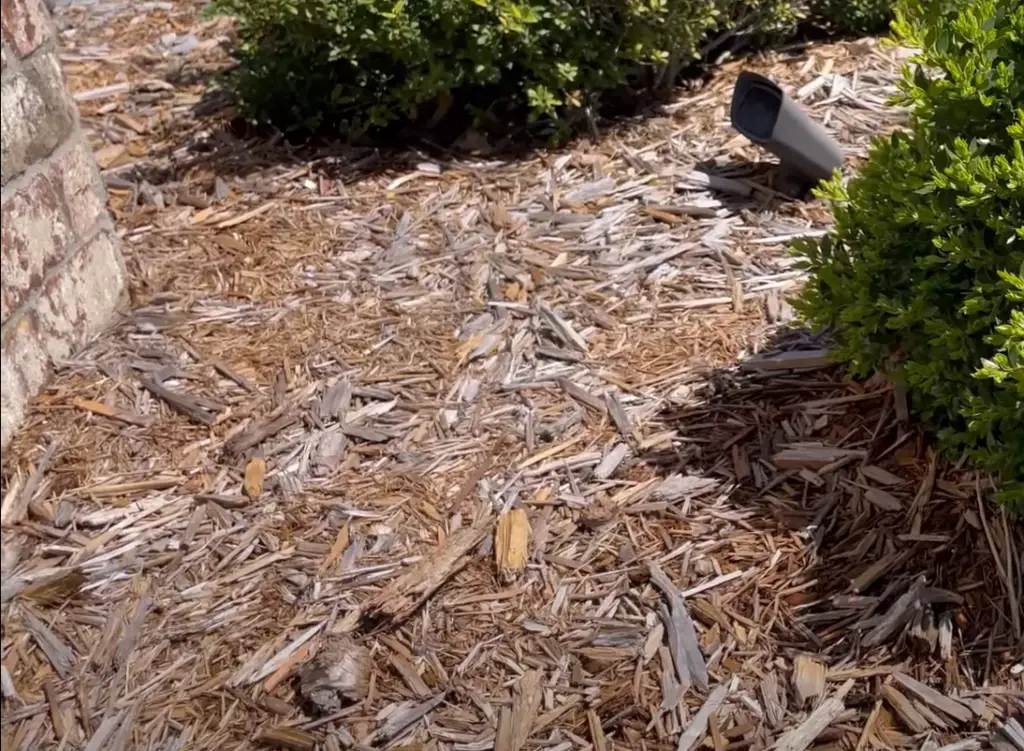
Soaker hoses direct the water to the roots of your plants. This means that the weeds will not get the water that they need to grow. You can also use a soaker hose to target specific areas of your garden that are prone to weed growth. By carefully watering these areas, you can prevent the weeds from taking over.
Environment-friendliness
Perhaps the best advantage of using a soaker hose is that they are very environmentally-friendly. Soaker hoses use less water than traditional watering methods such as sprinklers. This means that you can save water and help to conserve this important resource.
Time-effectiveness
Last but not least, soaker hoses can boast about being very time-effective. If you have a busy schedule, you may not have time to water your garden every day. With a soaker hose, you can set it up and then forget about it until the next time you need to water your garden. This can save you a lot of time each week and means that you do not have to spend hours watering your plants by hand. [2]
How to Use a Soaker Hose
Now that you know some of the advantages of soaker hoses, you may be wondering how to use one. Using a soaker hose is very easy.
Unwind the hose
The first step is to unwind the hose. You will need to find a level spot in your yard to place the hose. Once you have found a spot, you can begin to unroll the hose. As you are unwinding the hose, be careful not to kink it. Kinking the hose can damage it and make it less effective at watering your garden.
Flush the hose
Once you have unrolled the hose, you will need to flush it. This is important because it will remove any dirt or debris that may be in the hose.
Once done, place the cup back.
Connect the hose to the spout
Once you have unwound the hose, you will need to connect it to the spout. You can do this by screwing the hose onto the spout. Make sure that you screw it on tightly so that water does not leak out.
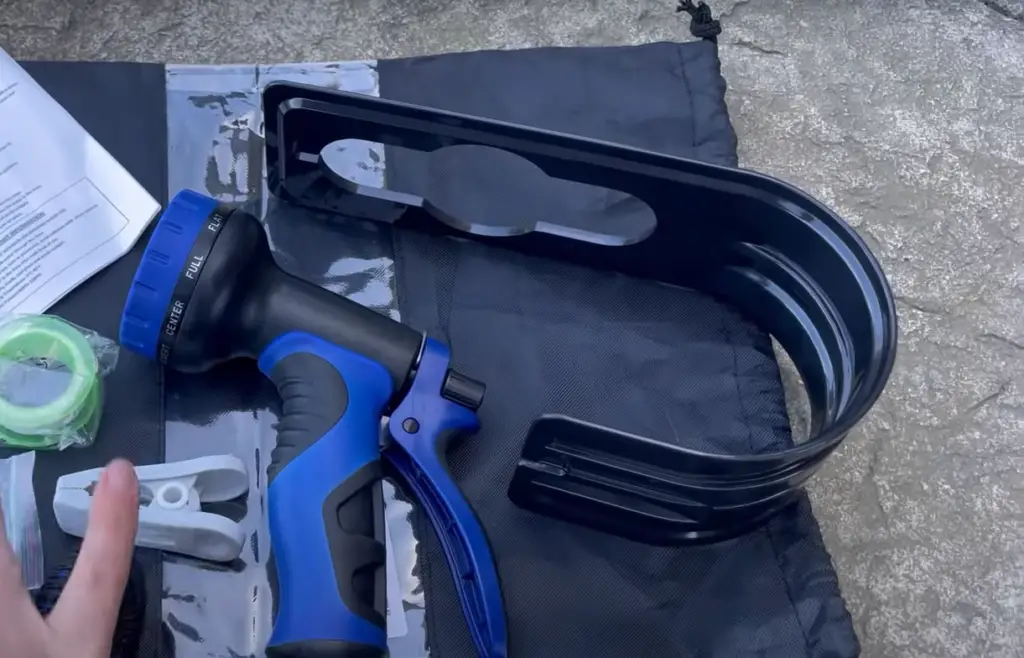
You may also need to connect an adapter to the end of the hose if your spout is a different size. You can usually find adapters at your local hardware store.
If you are using a soaker hose with an irrigation system, you will need to connect it to the system before connecting it to the spout.
Stretch out the hose well
After you have connected the hose to the spout, you will need to stretch it out well. This is important because it will ensure that the water can flow through the hose easily.
If you are using a soaker hose with an irrigation system, you will need to connect it to the system before connecting it to the spout. [4]
Where to Place Your Soaker Hose
Now that you know how to use a soaker hose, you may be wondering where to place it. There are a few things that you will need to consider when placing your soaker hose, but usually the ideal placement will depend on the plant type.
For bushes and trees, the soaker hose should be placed around the base of the plant. It is important to make sure that the soaker hose is not placed too close to the trunk of a tree or bush as this can cause rot. It is also important to keep the soaker hose away from any buildings or other structures as this can create moisture problems.
For flower beds, the soaker hose should be placed 2 inches away from the stem. If you have a large garden, you may need to use multiple soaker hoses to ensure that all of your plants are getting enough water.
If you have sandy soil, you should place soaker hoses 1 foot apart. If you have clay soil, you should place soaker hoses every 2 feet.
You should also make sure to keep the soaker hose away from any areas where there is standing water or flooding as this can cause your plants to drown. [4]
Soaker Hose Flow Rate Per Hour
Soaker hoses have different flow rates, and it is important to know the flow rate of your hose before you use it. The flow rate will determine how long it takes to water your garden. A higher flow rate means that the hose can water your garden faster.
A lower flow rate means that the hose will take longer to water your garden. If you are not sure about the flow rate of your hose, you can check the label or contact the manufacturer.

However, the higher flow rate also means that you will use more water. If you are trying to save water, you should choose a soaker hose with a lower flow rate.
The average soaker hose has a flow rate of about six gallons per hour. If you are unsure about your plants needs, a good call would be to start watering your garden for 30 minutes a day and then adjust accordingly.[1],[3]
Factors That Affect the Optimal Time to Run a Soaker Hose
It can be hard to determine the optimal time to run a soaker hose. This is because it depends on many factors, such as the weather, the type of plants in your garden, and the size of your garden.
If you are not sure how long to water the garden with a soaker hose, there are a few things that you can look into to help determine the right amount of time.
Climate
One of the most important things to consider when determining how long to water a garden with a soaker hose is the climate. If you live in an area with a lot of rain, you will not need to water your garden as often as someone who lives in a dry climate.
The amount of sun and wind in your area can also affect how often you need to water your garden. If it is very sunny and windy, your plants will lose more water and you will need to water them more often.
Season
This leads us to our next factor – season. Obviously, during the summer months, you will need to water your garden more often than in the winter.
This is because plants lose more water through evaporation in hot weather. You may also need to water more often if you have a lot of perennials in your garden that are actively growing during the summer months. On the other hand, if you live in an area with a lot of rainfall, you may not need to water your garden as often in the summer.
During spring or fall, the amount of rainfall will again be a factor in how often you need to water your garden. If it is a dry spring or fall, you will need to water more often than if it is a wet spring or fall.
Plant size and needs
need more water than others. Larger plants will also need more water than smaller plants.
You should also consider the type of plant that you are watering. Certain plants, such as succulents, do not need as much water as other types of plants. If you are not sure how often to water your plants, you can check the label or ask a gardener for advice.
You will also need to water more often if you have newly planted seeds or seedlings. This is because their roots are not yet fully developed and they cannot take up water as efficiently as mature plants.
Soil conditions
Another factor that you need to consider is the soil conditions. The type of soil in your garden will affect how long it takes for the water to seep through. For example, if you have clay soil, it will hold more moisture than sandy soil. This means that you will not need to water as often as someone with sandy soil.
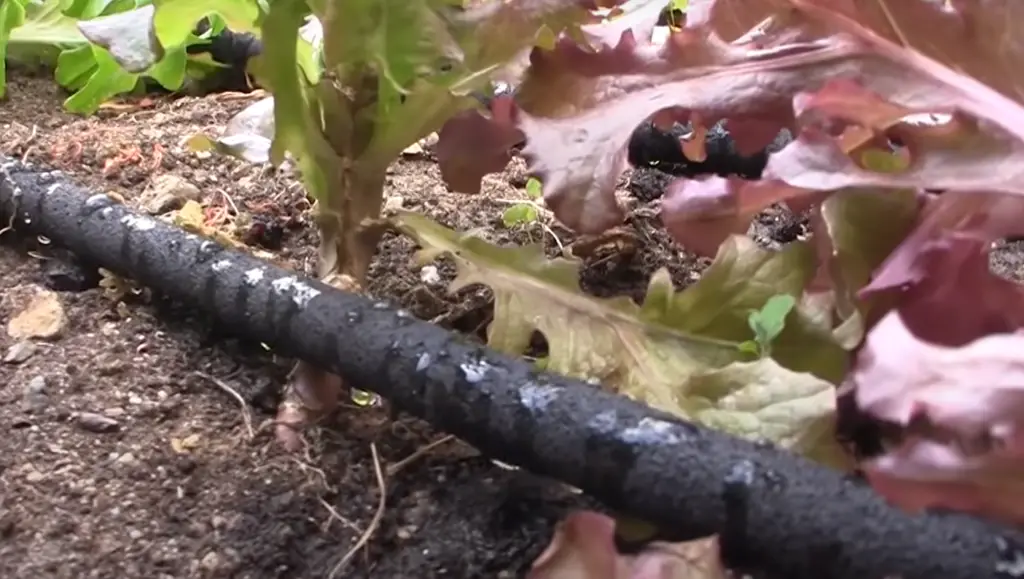
Organic matter such as mulch will also help the soil hold moisture. This means that you can reduce the amount of time that you water the garden with a soaker hose if you have mulch in your garden.
To determine the moisture levels in your soil, you can stick your finger into it.
Or, you can use a moisture meter. This device can help you to monitor the moisture levels in your soil. This information can help you to determine how long to water the garden with a soaker hose.
Once you have determined how long to run the soaker hose, you need to make sure that you stick to that schedule. Watering your garden too much or too little can lead to problems. If you water your garden too much, you could end up damaging your plants or even killing them. If you water your garden too little, your plants will not be able to grow properly. [1],[2],[3]
Comparison Table on How Long to Water Garden With Soaker Hose
Watering a garden with a soaker hose is an efficient and eco-friendly method that helps conserve water. However, the length of time the soaker hose needs to be left running depends on various factors, such as soil type, plant type, and weather conditions. In this table, we will compare the watering time for different soil types, plant types, and weather conditions.
| Soil Type | Plant Type | Weather Conditions | Watering Time (in minutes) |
|---|---|---|---|
| Clay | Vegetables | Hot and dry | 60 |
| Sandy | Flowers | Mild and cloudy | 30 |
| Loamy | Trees | Windy and cool | 90 |
This table compares the watering time for three different scenarios, based on the soil type, plant type, and weather conditions. The first row of the table shows that if the soil is clay, and the plants are vegetables, and the weather is hot and dry, the soaker hose needs to run for 60 minutes. The second row shows that if the soil is sandy, and the plants are flowers, and the weather is mild and cloudy, the soaker hose needs to run for 30 minutes. The third row shows that if the soil is loamy, and the plants are trees, and the weather is windy and cool, the soaker hose needs to run for 90 minutes.
Note that these are just general guidelines and may need to be adjusted based on individual garden conditions. It is always a good idea to monitor the soil moisture levels and adjust the watering time accordingly.
FAQ
How much water does a soaker hose use per hour?
The average soaker hose uses between three and four gallons of water per hour. This will obviously depend on the size of your garden hose as well as the pressure of the water coming out of it.
How do you use a soaker hose in a vegetable garden?
To use a soaker hose in a vegetable garden, first lay the hose out on the ground in the desired pattern. Next, connect one end of the hose to a water source and turn on the water. Adjust the flow rate as needed, then leave the hose to run for the specified amount of time. Finally, turn off the water and disconnect the hose when finished.
How many gallons per minute does a soaker hose use?
The output of a soaker hose depends on the diameter of the hose and the water pressure. A ½-inch diameter hose under 40 PSI (pounds per square inch) of pressure will flow about six gallons per minute.
Should I use a soaker hose in my garden?
There are a few things to consider when deciding whether or not to use a soaker hose in your garden. One is the type of plants you are growing. If you have delicate plants that cannot tolerate much water, then using a soaker hose might not be the best idea. Another thing to consider is how often you want to water your garden. If you only need to water it once a week, then using a soaker hose might not be necessary. Finally, you should also think about the size of your garden. If it is very small, then using a soaker hose might not be worth the effort.
How long should you water trees with a soaker hose?
It is crucial to check the ground moisture around your tree before you start watering with a soaker hose, as this will help you determine how long to leave the hose on. Depending on the size of your tree, you may need to water for 30 minutes or more in order to adequately saturate the root zone. If possible, it’s best to place 1-2 inches of mulch around the base of your tree to help conserve moisture and reduce run-off. It is also best practice not to over-water, as this can cause root rot and other issues. To test if adequate water has been applied, take a shovel and dig down about 8 inches into the soil near the root zone. If it is still dry at that level, keep the soaker hose on for a few more minutes.
How often should you water new shrubs with a soaker hose?
For best results, water new shrubs with a soaker hose for 15 minutes. This will give the roots enough time to absorb the water and get established. During this period, you should make sure that the soil is kept moist but not saturated. After 15 minutes, check the moisture levels of your soil with your finger or a trowel to determine if additional watering is necessary. Be sure to adjust your watering times based on changing weather conditions such as heat waves or hot days when more frequent waterings may be needed.
For mature plants, depending on their size and type, they can typically go without being watered until the top few inches of soil are dry before needing a good soak. This can range anywhere from every 3-7 days or as needed. When watering mature plants, it’s best to keep the soaker hose in place for 30 minutes or more to ensure that their deeper roots are absorbing enough water. After 30 minutes, you may need to check the moisture levels of your soil again and adjust your timing accordingly.
How long to run a soaker hose for roses?
The short answer is that you should water your roses with a soaker hose for at least an hour per week. If you want to give your roses the best possible care, however, you may want to increase the duration up to two hours or more during times of heat and drought. To ensure even coverage of water, set the timer on the soaker hose for 15-minute intervals over the course of one hour. You can also adjust this time according to how wet or dry your soil is; if it’s very dry, then extend the watering time by 10 minutes or more each interval.
Also make sure to monitor your roses throughout their growing season to see if they need additional watering beyond what is provided by a soaker hose. If the roses are wilting or otherwise showing signs of distress, then it’s time to give them some extra TLC in the form of a longer watering session with a soaker hose. Finally, keep an eye on the weather: if there is heavy rain, then you may not need to water your roses at all that week.
How many gallons of water flow through a soaker hose per hour?
The amount of water used by a soaker hose depends on both the size of the hose and the pressure of your water supply. A standard ¼-inch soaker hose will typically use between 1 and 4 gallons per hour. For example, a 50-foot section of ¼-inch soaker hose will use approximately 2 gallons per hour at 10 psi (pounds per square inch) or up to 4 gallons at 30 psi.
How long to run a soaker hose for tomatoes?
For tomatoes, you should run the soaker hose for about 15-20 minutes at a time. Make sure to keep the hose away from the stems of your tomato plants as this can cause stem rot and damage your plants. Watering too frequently or too heavily can also drown out beneficial microorganisms in the soil around your tomato plants, so make sure to water your garden thoroughly but not excessively. Additionally, it may be helpful to use a timer when watering with a soaker hose so you don’t forget how long it has been running.
It is important to note that no two gardens are alike – soil type, temperature, humidity, plant size and species all play an important role in determining how much water your garden needs.
How long to leave a soaker hose on the grass?
The answer to this depends largely on the size of the area you are watering, as well as how much water pressure is available. For example, if you have a relatively small area and high water pressure, such as with a garden hose connected directly to an outdoor tap, then you will likely only need to leave the soaker hose on for 10 to 20 minutes in most cases. However, if you have a larger area or lower water pressure, such as when using a garden hose that has gone through your home’s plumbing system (such as from a sink), then it may take up to an hour or more for the soaker hose to effectively irrigate your lawn. Ultimately, it’s best to monitor the amount of time your soaker hose is irrigating and adjust accordingly. One good indicator is the color of your lawn—if it begins to look dry and brown, then you may need to give it a few more minutes with the soaker hose. If you find that you have to keep the soaker hose on for longer periods of time or if it’s not effectively irrigating your lawn, then it may be time to switch to a more powerful watering system, such as a sprinkler.
How long to run a soaker hose for hydrangea?
The amount of time a soaker hose should be used to water hydrangeas depends on the size and type of your garden, as well as the weather conditions. Generally speaking, a soaker hose needs to run for about 30 minutes, once or twice a week. If it is unusually hot or dry in your area, you may need to run it more frequently or for longer periods of time.
When watering with a soaker hose, ensure that you give the plants around 1″ of water per week by running the hose until the soil is saturated up to 6 inches deep. This can usually be accomplished by letting the hose run for 30 minutes at a slow drip rate. To avoid overwatering and root rot, don’t let the hose run for more than an hour or two.
How much water does a 30 minute soaker hose use?
A 30 minute soaker hose will use approximately 20 gallons of water. This number can vary depending on the size of the garden, type of soil and other factors. In general, it is recommended to run a soaker hose for at least 30 minutes each time you water your garden or flower beds. This ensures that the plants receive an adequate amount of water without wasting too much. If you have sandy or well-draining soil, then you may run the soaker hose for less than 30 minutes to avoid over-watering. On the other hand, if your soil is clay-based and has poor drainage, then running your soaker hose for longer than 30 minutes may be necessary in order to ensure that all areas receive adequate moisture.
Do you leave soaker hoses on all day?
It is not recommended to leave your soaker hoses on all day. Doing so can lead to over-watering, which can damage plants and encourage root rot. It’s best to adjust the length of time according to the type of soil you have, the amount of sun that area gets and other factors. This will help ensure that your plants receive just the right amount of water without wasting any extra.
Can you run a soaker hose overnight?
This is a question that many gardeners often ask. The answer to this depends on the size of your garden and how much water it needs, but generally speaking, running a soaker hose overnight can be an effective way to water your garden.
The primary benefit of using a soaker hose is that you can get water to where it’s needed most without wasting any. Soaker hoses are designed with tiny holes that slowly allow water to seep out at a steady rate, which helps ensure proper distribution throughout the garden. For maximum efficiency, you should lay the soaker hose in long loops around your plants or along rows of vegetables; however, if space doesn’t permit for this arrangement, you may have to settle for coiling the hose in a smaller area.
Do you need a timer for the soaker hose?
Using a timer for your soaker hose is not necessary but can be helpful. A timer will allow you to set how long the hose runs, which in turn helps conserve water as it eliminates any worry of over-watering or having the hose run too long.
The amount of time required to properly water your garden with a soaker hose varies depending on your soil type and the size of your garden. Generally speaking, 20 minutes should be sufficient for most gardens; however, if you are dealing with heavier soils that require more water, then you may need to let it run up to an hour or more. It’s also important to factor in rainfall – if there has been heavy rain in the past few days, then you can reduce the amount of time you let the hose run.
Why is it better to use a soaker hose instead of a sprinkler?
Using a soaker hose instead of a sprinkler offers several advantages. Firstly, they are much more efficient and don’t waste as much water. Sprinklers tend to spray water all over the place, which can lead to areas of your garden becoming oversaturated while other parts receive too little water. Soaker hoses are also better at reaching hard-to-reach spots in your garden that a regular sprinkler might miss. Finally, using a soaker hose is generally less expensive than using a sprinkler system, making it an ideal choice for those on a budget.
Useful Video: How To Water Your Garden With Soaker & Emitter Hoses | Beginner’s Guide For Garden Watering
Conclusion
Soaker hoses are an excellent way to water your garden with little effort. Still, many people wonder how long they should water their garden with a soaker hose. The answer to this question is not as straightforward as you might think. In general, you should water your garden with a soaker hose for at least 30 minutes to ensure that the roots of your plants get enough moisture. However, there are a few factors that can affect how long you need to water your garden with a soaker hose, such as the type of soil you have, the weather, and the size of your garden.
The most important thing to remember when watering your garden with a soaker hose is to check the soil moisture levels frequently. Overwatering can lead to problems such as root rot, so make sure to keep an eye on the conditions of your soil. With a little bit of care and attention, you can ensure that your plants get exactly what they need to grow strong and healthy. Thanks for reading!
References:
- https://turfmechanic.com/how-long-to-run-a-soaker-hose-for/
- https://www.greengardentribe.com/how-long-to-run-a-soaker-hose-for-a-vegetable-garden/
- https://theyardandgarden.com/how-long-to-leave-soaker-hose-on/
- https://gilmour.com/set-soaker-hose





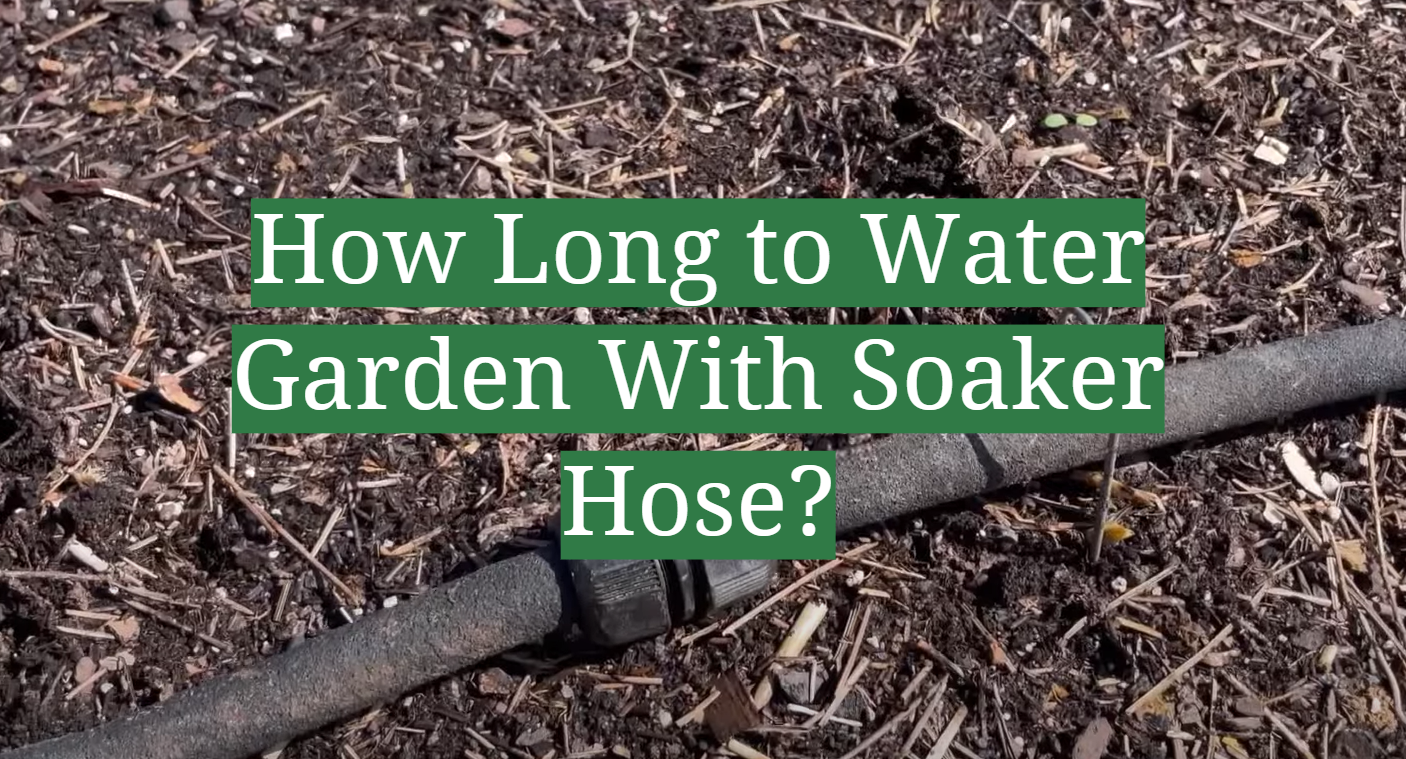
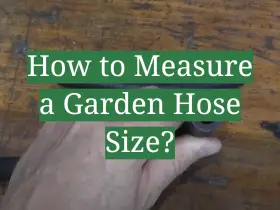
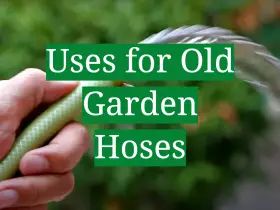
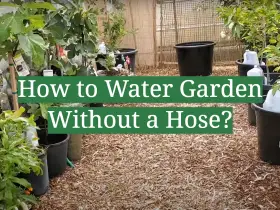
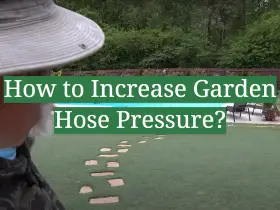
When I was a young child, my grandmother always grew the most amazing tomatoes in her garden. I would always go over to her house to help her water the plants, and she would show me how to use the soaker hose. She would tell me that it was important to water the plants for a long time, so that the water could soak down to the roots. She said that this would help the tomatoes grow big and strong.
I have continued this tradition in my own garden, and I have found that watering for at least an hour is the key to producing delicious tomatoes. I like to set my timer for an hour, and then walk away from the hose. This allows the water to slowly saturate the soil, and the plants can drink as much as they need. I have found that this method produces healthier plants, with larger fruits than if I were to water for a shorter amount of time.
When I first started gardening, I wasn’t sure how long to run the soaker hose. I consulted with a few friends and did some online research, but I still wasn’t sure what was the best way to water my garden. Finally, I just decided to try it for a few days and see how it goes. Turns out, running the soaker hose for about 2 hours each day is the perfect amount of water for my garden!
I have been using a soaker hose in my vegetable garden for the past few years, and I have found it to be a very efficient way to water my plants. I usually wait until the soil is fairly dry before I water my garden, and then I will use the soaker hose to slowly water all of the plants. This method of watering is beneficial because it helps to conserve water, and it also helps to prevent the plants from getting too wet, which can lead to disease.
I’m a big fan of using a soaker hose to water my vegetable garden. I’ve found that it’s the most efficient way to water everything, and it helps conserve water, too. I usually run my soaker hose for about an hour each time, but you may need to adjust that depending on your garden’s size and the weather conditions. I always make sure to water in the morning, so the plants have all day to absorb the moisture.
I love spending time in my garden. The peace and tranquility I find there is unmatched. This year, I decided to add a soaker hose to help with the watering. I wasn’t sure how long to run it, so I did some research. According to most sources, the soaker hose should be run for 30 minutes per zone per week. So, I divided my garden into three zones and ran the hose for 30 minutes each day. After a few weeks, I noticed that my plants were looking a bit droopy. I increased the time to 45 minutes per zone and that seemed to do the trick. Now my garden is looking healthy and vibrant!
Soaker hoses are one of the most efficient methods of watering a garden. They work by allowing water to seep out slowly along the entire length of the hose. This means that they can be left on for long periods of time, which is perfect for gardens that need a lot of water. I have been using the same soaker hose for over two years now and it is still going strong.
I live in a dry climate and my garden needs a lot of water to stay healthy. I used to spend hours each week watering my garden by hand, but since I got a soaker hose, I don’t have to worry about it anymore. I just turn the hose on and let it run for a few hours. This saves me a lot of time and energy, and it also helps me save money on my water bill.
Soaker hoses are definitely worth the investment, and they can last for many years if you take care of them properly.
Watering your garden with a soaker hose can be a great way to conserve water while still providing your plants with the hydration they need. Here is how I use a soaker hose in my garden:
First I determine which parts of the garden need watering. I usually do this by checking the soil moisture levels. If the soil is dry, then I know that that part of the garden needs watering.
Once I have determined which parts of the garden need watering, I attach the soaker hose to my spigot and turn on the water. I then stretch the soaker hose out across the garden and attach it to each of the plants that need water.
I usually let the soaker hose run for about an hour, or until the soil is moist. After I am done watering, I detach the soaker hose from each plant and put it away for next time.
I love watering my garden with a soaker hose! I find it very relaxing to just sit and watch the water trickle out and soak into the soil. I usually start by watering my trees for about an hour. I make sure to go around each tree and water the entire root area. I then move on to the other parts of my garden and water everything for about another hour. By doing this, I am able to get my garden nice and wet without wasting any water.
I have never timed how long it took to water my garden with a soaker hose, but I would guess it was around 30 minutes. I have a fairly small garden, so if you have a larger one, it might take longer. I always felt like the water was going everywhere except where I needed it to go, but apparently that is just because I wasn’t using the hose properly. According to some online sources, you should place the hose near the base of the plants and gently move it back and forth so the water seeps into the soil. I never did this, and as a result, my flowers tended to get droopy. Soaker hoses are definitely more efficient than watering plants by hand, but make sure you use them correctly or you’ll be wasting water!
I planted some new shrubs in my garden and was unsure how long to water them with the soaker hose. I started by watering for 10 minutes and then checked the soil to see if it was wet. It wasn’t, so I watered for another 10 minutes. The soil was still dry, so I watered for another 20 minutes. The soil was finally wet, so I stopped watering. I’ll probably need to water for a longer amount of time when I water the shrubs again.
I was so excited when I got my new soaker hose! I couldn’t wait to water my garden with it. But I wasn’t sure how long to water for, or how many gallons per hour the hose put out.
I did a little research online, and found that most hoses put out around 1-2 gallons per hour. So I set my timer for 30 minutes, and let the hose do its thing.
It was so nice to be able to water my garden without having to go outside and hold the hose! And it was great that the water was going right where it needed to go, instead of all over the ground.
I was really happy with how well the soaker hose worked, and I’m looking forward to using it again this year!
Soaker hose placement is key when watering your garden with one. I’ve found that the best way to use a soaker hose is to place it near the plants that need the most water. This way the water can really soak in and the hose doesn’t need to be moved around as much. I also like to put my soaker hose on a timer so that it waters my garden for a set amount of time each day. This helps me make sure that my plants are getting the water they need, without having to worry about it.
I usually leave the soaker hose on for around an hour, but it really depends on how much water my garden needs. I find that this is the perfect amount of time to provide my plants with enough water, without wasting any. Plus, it’s really easy and convenient to just leave the hose on autopilot for an hour.
I was recently given a soaker hose to help water my garden. I wasn’t sure how much water it used per hour, so I did some research. According to one website, a soaker hose typically uses between 0.5 and 2 gallons of water per hour, depending on the water pressure.
Since I have a low water pressure, I opted to use the hose at the lowest setting, which uses just 0.5 gallons of water per hour. I was happy to find out that this amount is very low, and shouldn’t cause my water bill to increase too much.
I absolutely love using a soaker hose to water my raised garden beds! It’s so easy to use and really saves on water. I just lay the hose out next to the bed, turn on the water, and let it run. The water seeps slowly and evenly through the soil, which helps to keep the plants healthy and hydrated. I usually only need to water my garden for around 30 minutes with the soaker hose, which is a lot less time than it would take me to hand water each individual plant. Plus, there’s no need to worry about getting the water all over myself or the plants nearby!
I was really excited when I got my soaker hose. It seemed like the perfect way to water my garden without wasting water. But I wasn’t sure how long to water for, or how often to water. I did some research online, and found a few different guides. But they all seemed to contradict each other.
I decided to just experiment a little bit, and see what worked best for my garden. And it turns out, every garden is different. So you have to find what works best for you. But here’s what worked for me:
I started by watering for about 20 minutes per day. But I quickly realized that my soil was retaining a lot of water, so I only needed to water for about 10 minutes per day. And I only needed to water once or twice per week.
Soaker hoses are a great way to conserve water, and they’re also really helpful in keeping your plants healthy.
Soaker hoses are one of my favorite gardening tools. I love how they conserve water by slowly dripping it out over a long period of time. This is perfect for vegetable gardens, where you want the water to soak deep into the soil to help the plants grow big and strong.
I usually water my garden for about an hour once or twice a week, using a soaker hose. I find that this is enough to keep the plants happy and hydrated, without wasting water unnecessarily. Plus, it’s really easy and low-maintenance; I just set it and forget it!
If you’re new to gardening, I highly recommend giving soaker hoses a try. They’re a great way to conserve water and help your plants thrive.
I was curious as to how much water my soaker hose used, so I did some testing. I filled up a five gallon bucket and timed how long it took for the hose to use up all the water. It took the hose about 45 minutes to use up all the water. This means that if you have a garden that is 500 square feet, it would take about 22 hours for the hose to water the entire garden.